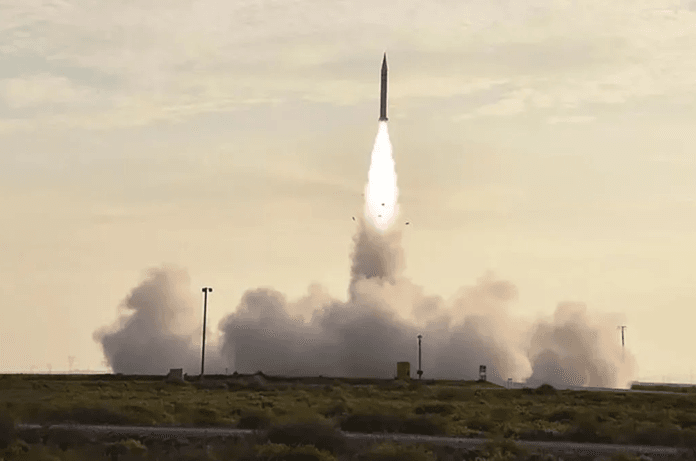Imagine boarding a plane in Beijing, settling into your seat, and arriving in New York just two hours later before your coffee has even cooled. Sounds like science fiction, right? Well, this futuristic vision took a giant step closer to reality in August 2021 when a team of Chinese scientists successfully tested a prototype hypersonic aircraft that reached astonishing speeds of Mach 6.56; nearly 7800 KMPH more than six times the speed of sound.
This isn’t just a tale of speed and technology it’s a story of perseverance, doubt, and innovation. Leading the charge is Cui Kai, a researcher at the Chinese Academy of Sciences. Cui refused to let skepticism ground his ambitious dreams. The journey from a “crazy idea” to a successful flight test is as fascinating as the technology itself.
Let’s explore the human element behind this scientific marvel and the groundbreaking design that could revolutionize air travel as we know it.
A Bold Vision and the Power of Perseverance
Back in 2018, when Cui Kai and his team at the Institute of Mechanics unveiled their hypersonic aircraft design, the response was far from enthusiastic.
“At the time, everyone thought it was a crazy idea,” Cui recalled during a speech in Beijing in October. And it’s easy to see why. Their design was unconventional, featuring bulky, round fuselage and cape-shaped wings instead of the sleek, needle-like structures typical of hypersonic concepts.
The idea that such a “chubby” aircraft could achieve hypersonic speeds was met with universal skepticism. Yet, Cui and his team believed in their vision. “Fortunately, we chose to persevere. I always believed that innovation thrives amid doubt,” he said.
It wasn’t just blind faith. This belief was backed by years of painstaking research, wind tunnel tests, and relentless refinement. Hundreds of thousands of yuan were invested in each test. Yet, failures were frequent. But each setback brought them closer to their goal. Finally, in 2021, they secured permission for a test flight at the Jiuquan Satellite Launch Centre in China’s Gobi Desert.
The Moment of Triumph: A Historic Test Flight
On a clear day in August 2021, the scaled-down prototype took to the skies. For 20 nail-biting minutes, the aircraft soared at speeds previously thought impossible for such a design, reaching Mach 6.56. This was more than just a successful test it was a vindication of years of effort and belief.
While talking to SCMP, Cui said, “The moment I saw that small aircraft soar into the sky, the sense of achievement and pride was truly indescribable.”
The significance of this test cannot be overstated. Not only did it prove that the unconventional design could handle hypersonic speeds, but it also addressed a major challenge that has long plagued aircraft designers: the trade-off between speed and internal space.
Why This Design Matters: The Technical Breakthrough
Traditionally, hypersonic vehicles are slim and sleek to minimize air resistance. However, this design limits internal space, making such aircraft impractical for commercial use. The legendary Concorde, which flew at supersonic speeds, had a cramped cabin, and passengers frequently risked bumping their heads when standing up.
Cui’s design flips this problem on its head. The broad, rounded fuselage offers ample interior space, while the cape-shaped wings above the body cleverly turn a challenge into an advantage. As the aircraft speeds up, downward pressure at the front of the airframe is converted into upward lift, enhancing stability and climb performance.
This breakthrough means that hypersonic aircraft could potentially carry as many passengers or as much cargo as today’s jumbo jets, making ultra-fast air travel feasible for commercial purposes.
Despite the successful test flight, Cui and his team acknowledge that they are only at the beginning of a long journey. Developing a full-scale hypersonic aircraft involves overcoming significant challenges related to power, materials, and structural integrity.
“For such cutting-edge technology, we still face numerous challenges that need to be addressed directly,” Cui noted. The team is working hard to resolve these issues, but they remain tight-lipped about when a full-scale model might take to the skies.
The project received a boost in 2022 when the National Natural Science Foundation of China approved funding to support the development of civilian hypersonic flight technology. While the timeline for a passenger-ready hypersonic plane is still uncertain, the potential is enormous. If successful, this technology could reduce global travel times to mere hours, bringing the world closer than ever before.
From Skepticism to the Skies: The Human Spirit Behind Innovation
The story of Cui Kai and his team is more than a tale of technological prowess it’s a testament to the human spirit. It’s about daring to dream big, challenging conventional wisdom, and pushing the boundaries of what’s possible. It’s about refusing to let doubt and skepticism clip your wings.
Their journey is a reminder that innovation often starts with an idea that seems ridiculous. But with perseverance, passion, and a willingness to face challenges head-on, those “crazy” ideas can soar to unimaginable heights.
Looking to the Future: A Call to Dream Bigger
As we stand on the brink of a new era in aviation, it’s worth pausing to consider what this could mean for the future. Hypersonic travel isn’t just about speed; it’s about transforming how we connect, communicate, and experience the world.
Today’s unveiling of the 2021 test flight results, reported by South China Morning Post and the Chinese Academy of Sciences, brings this future a step closer to reality. The journey isn’t over, but the foundations have been laid. The next time you board a long-haul flight, remember that somewhere, in a lab or a wind tunnel, scientists like Cui Kai are working to make that flight last just two hours.
We may not know when hypersonic passenger planes will become a reality, but one thing is clear: the sky is no longer the limit.

